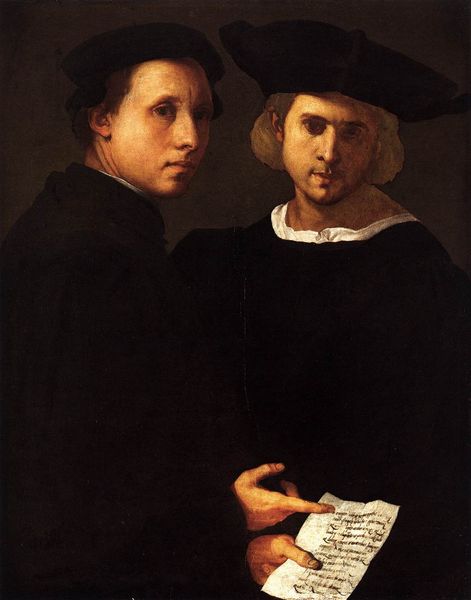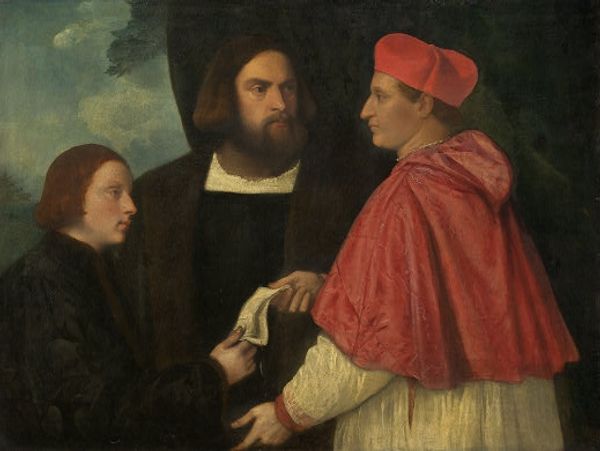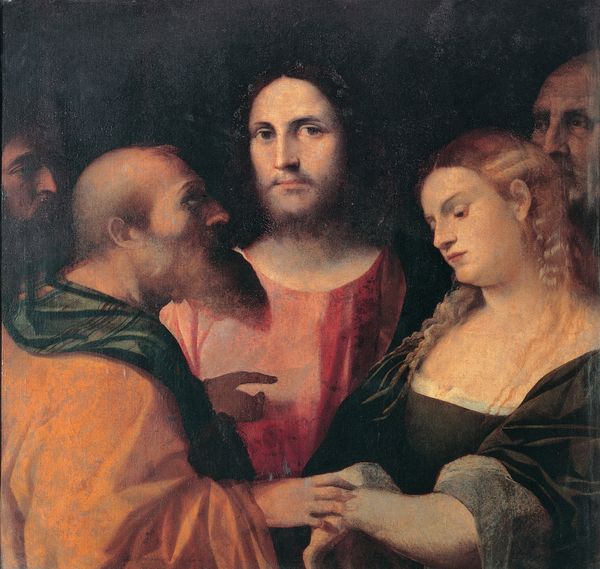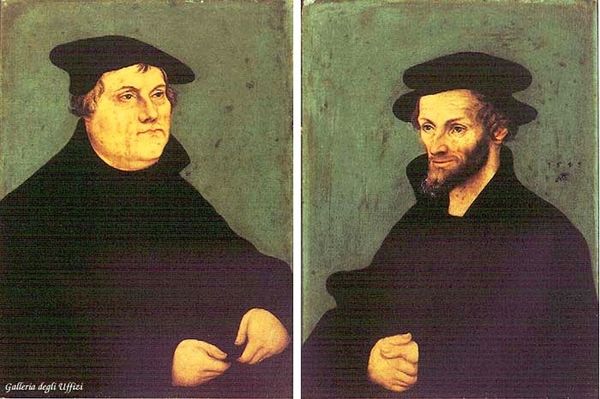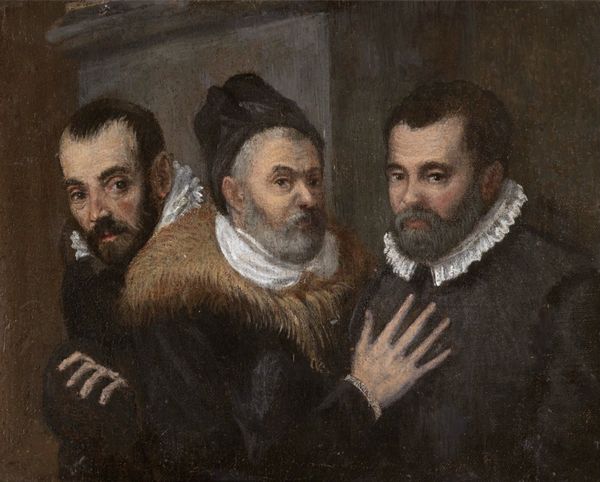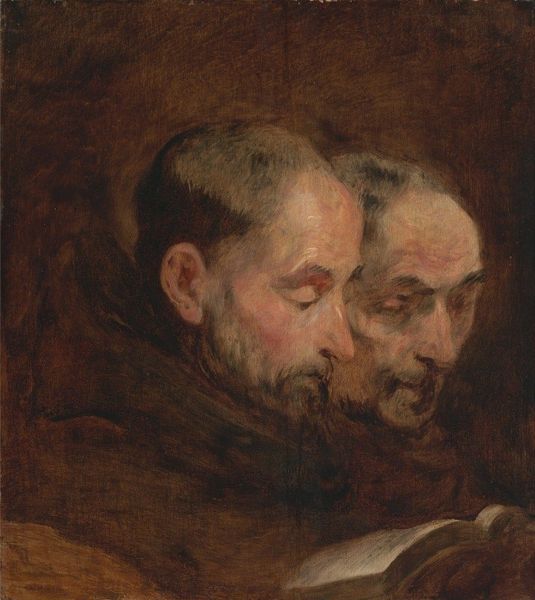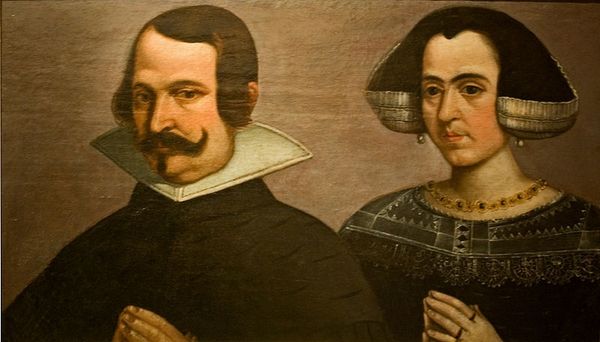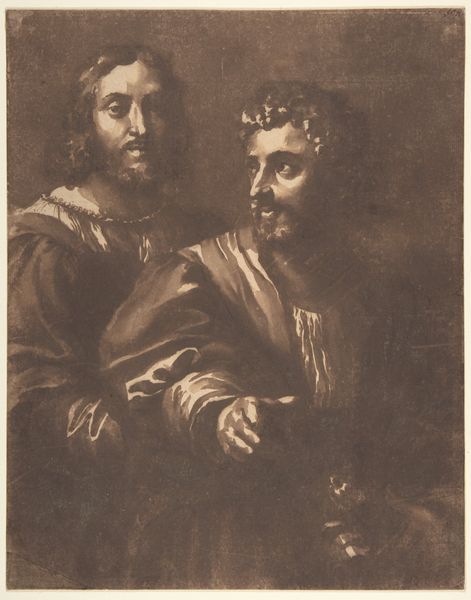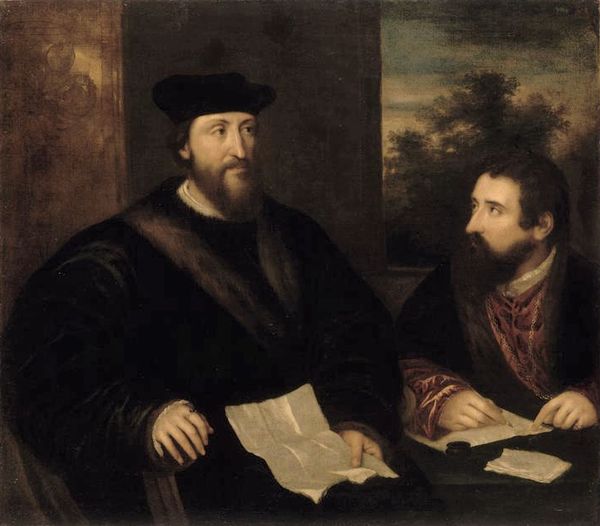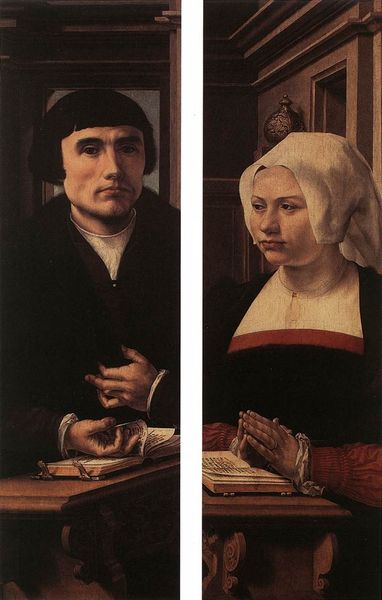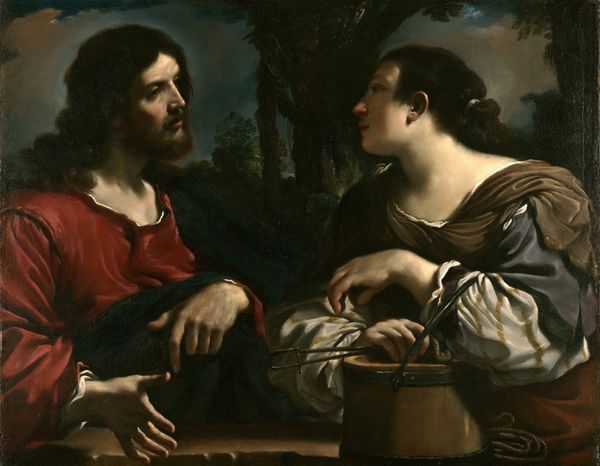
Portrait of Andrea Navagero and Agostino Beazzano 1516
0:00
0:00
raphael
Galleria Doria Pamphilj, Rome, Italy
painting
#
portrait
#
high-renaissance
#
portrait
#
painting
#
group-portraits
#
italian-renaissance
#
portrait art
Dimensions: 107 x 76 cm
Copyright: Public domain
Curator: Looking at this double portrait by Raphael, created around 1516 and currently housed in the Galleria Doria Pamphilj in Rome, I’m immediately struck by the rich application of oil paint and the evident detail given to fabric and skin. Editor: The first thing that grabs me is the stark contrast – almost theatrical, wouldn't you agree? The deep shadows versus the brightly lit faces… it hints at so much unspoken power, especially during that time period. Who were these men and what kind of social standing did they possess to warrant such an evocative painting? Curator: Well, these are believed to be portraits of Andrea Navagero and Agostino Beazzano, both Venetian scholars. The texture of their clothing, their beards, is carefully rendered; you can practically feel the weight and weave of the fabrics, a testament to the guilds of textile producers from the area. Editor: Precisely. Venice during the High Renaissance was this nexus of trade and intellect. Showing these two scholars together – the shared gaze they direct outwards – what commentary does it offer on masculine intellectual partnerships? It feels ripe with suggestion on Renaissance-era sociopolitical values regarding collaboration, particularly among educated men. Curator: From a material perspective, the layers of oil paint and the visible brushstrokes denote the time-consuming process, a kind of laborious craft sanctioned by a wealthy patron. The artistic process becomes as crucial to the artwork as the final aesthetic. Editor: Right, the making matters, absolutely, and it intersects with so much. Think of it – wealthy patrons bankrolling artwork that promotes this image of powerful intellectuals reinforces an entrenched social hierarchy. It becomes less a portrait, and more a status affirmation during times of emerging societal shifts and intellectual curiosity. Curator: It also seems Raphael paid great attention to portraying their human features – their imperfections, almost. The shadows and minute wrinkles indicate the tangible passage of time reflected by Raphael’s detailed observation skills and technique. Editor: Those imperfections… the humanization…it begs the question: was it subversive, intentionally highlighting their fallibility in contrast to the idealized nobility one might expect? Or just accurate reporting on two men who were instrumental in Venetian culture and thought? These were certainly people with clout, their presence amplified by Raphael’s brushstrokes, but who truly controlled the narrative being presented? Curator: It shows how labor, resources, and artistic talent coalesced during the Renaissance to produce these amazing cultural testaments to craft production, and how we continue engaging with these questions today. Editor: Indeed, prompting a continuing inquiry and examination of not just the aesthetics of this artwork, but also the circumstances behind it as well as its echoes through history.
Comments
No comments
Be the first to comment and join the conversation on the ultimate creative platform.

